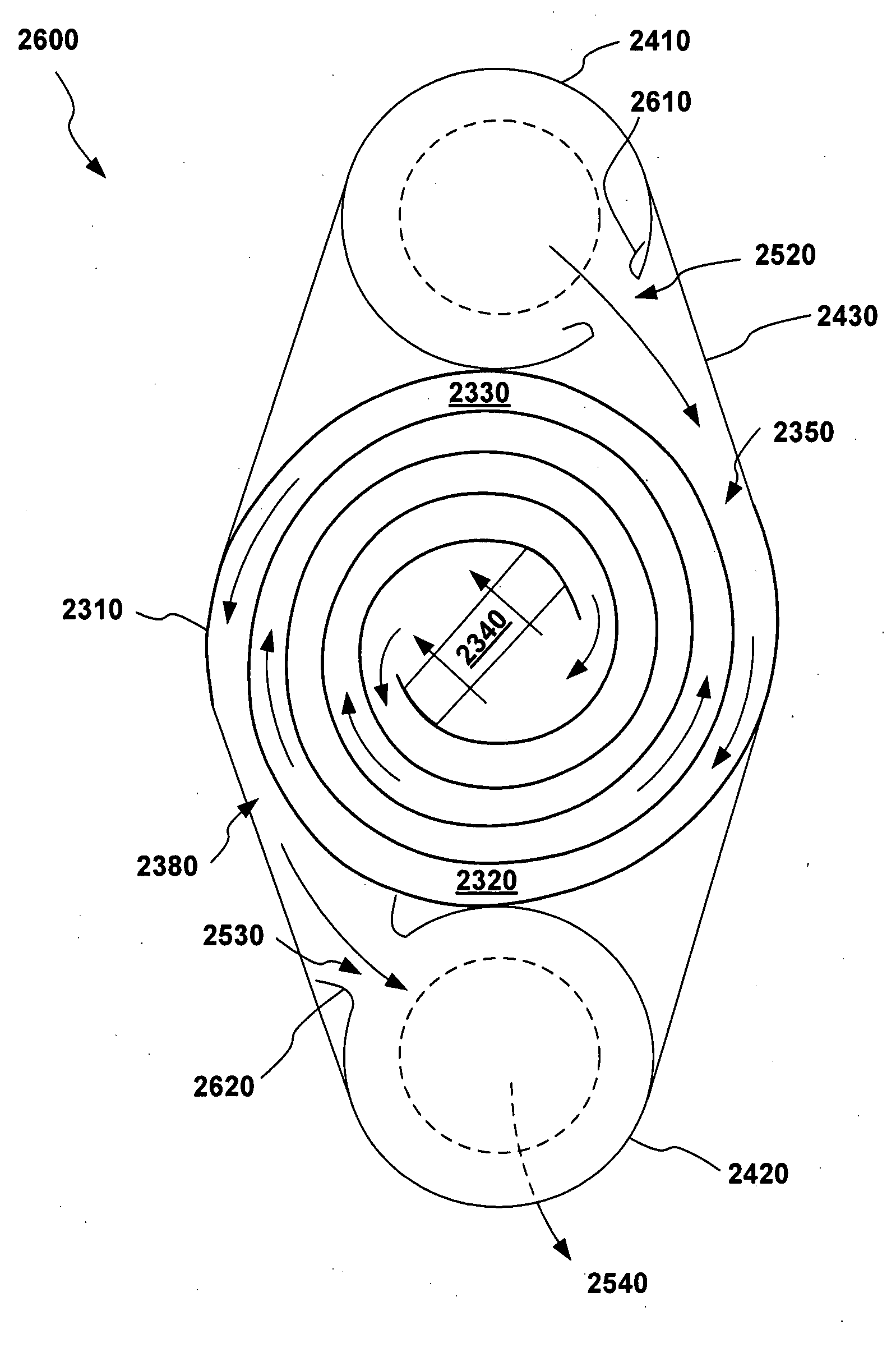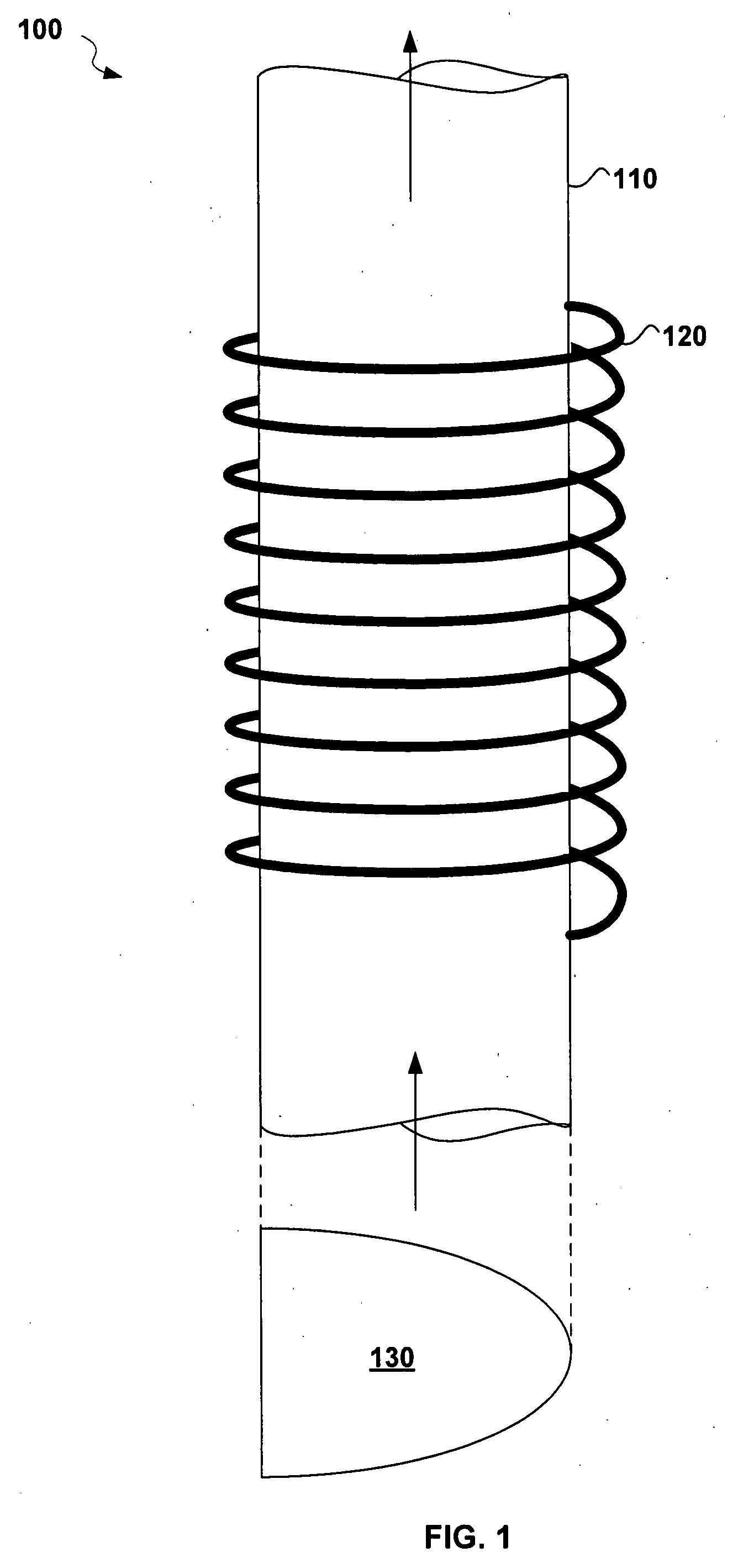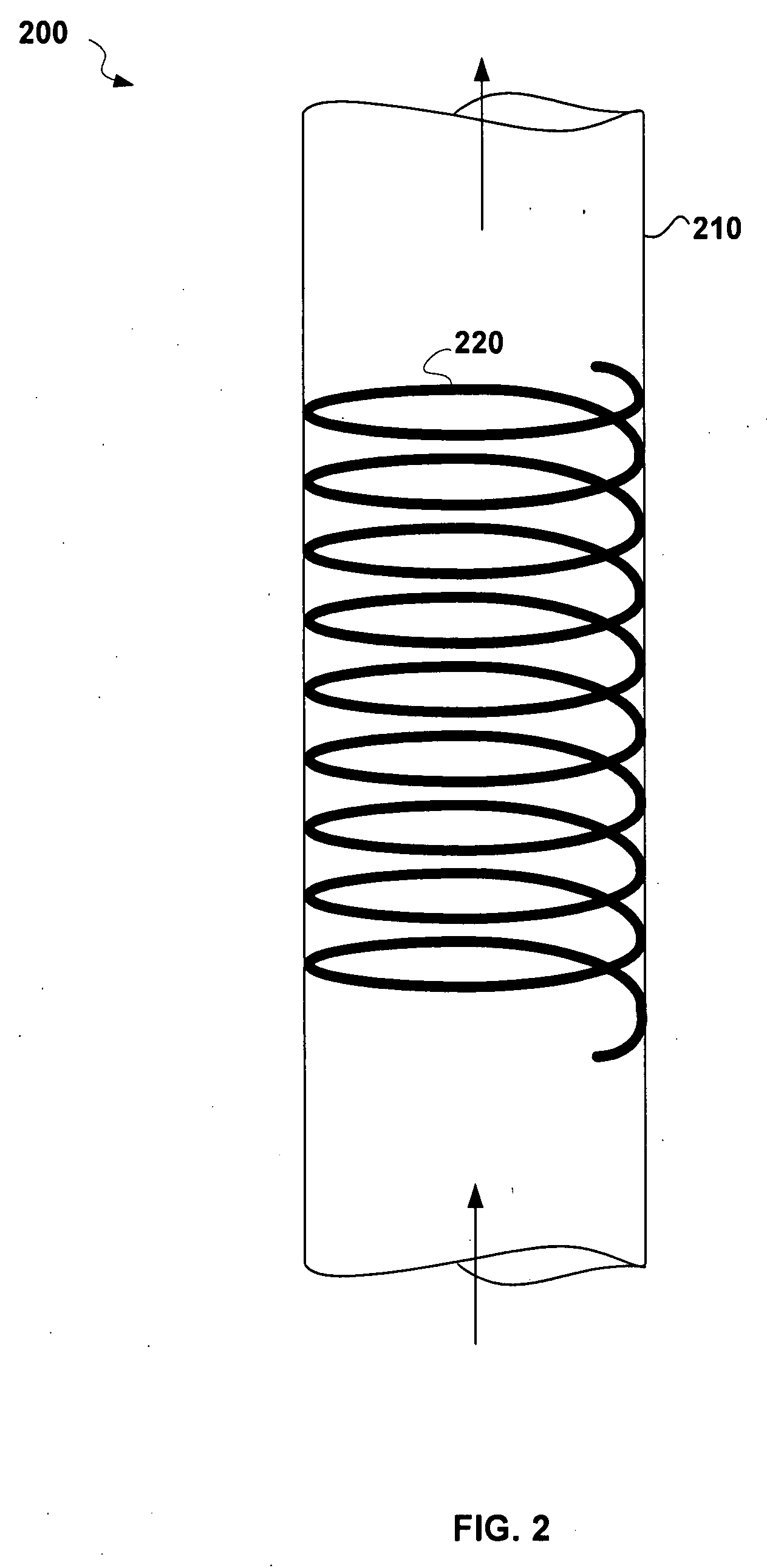Particle burner including a catalyst booster for exhaust systems
- Summary
- Abstract
- Description
- Claims
- Application Information
AI Technical Summary
Benefits of technology
Problems solved by technology
Method used
Image
Examples
Embodiment Construction
[0045]An exhaust system comprises a combustion chamber and a radiation source to facilitate the combustion of particles within the chamber. Once ignited, the combustion can continue so long as the concentration of particles in the exhaust entering the chamber remains sufficiently high. The disclosed device can replace both the muffler and the catalytic converter in a vehicle exhaust system and offers reduced back pressure for better fuel economy and lower maintenance costs. The device requires little to no maintenance and is self-cleaning.
[0046]FIG. 1 depicts an exhaust system 100 comprising a combustion chamber 110 and a radiation source 120. The combustion chamber 110 can be constructed using any suitable material capable of withstanding the exhaust gases at the combustion temperature of the particles. Suitable materials include stainless steel, titanium, and ceramics. In one embodiment, the combustion chamber 110 has a non-circular cross-section 130 perpendicular to a longitudina...
PUM
 Login to View More
Login to View More Abstract
Description
Claims
Application Information
 Login to View More
Login to View More - R&D
- Intellectual Property
- Life Sciences
- Materials
- Tech Scout
- Unparalleled Data Quality
- Higher Quality Content
- 60% Fewer Hallucinations
Browse by: Latest US Patents, China's latest patents, Technical Efficacy Thesaurus, Application Domain, Technology Topic, Popular Technical Reports.
© 2025 PatSnap. All rights reserved.Legal|Privacy policy|Modern Slavery Act Transparency Statement|Sitemap|About US| Contact US: help@patsnap.com



